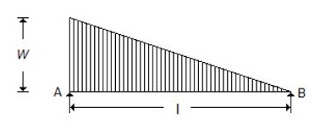Young's modulus is defined as the ratio of
A. Volumetric stress and volumetric strain
B. Lateral stress and lateral strain
C. Longitudinal stress and longitudinal strain
D. Shear stress to shear strain
Answer: Option C
Solution (By Examveda Team)
Young's modulus is defined as the ratio of longitudinal stress to longitudinal strain.Longitudinal stress: This is the force per unit area applied in the direction of the length of a material.
Longitudinal strain: This is the deformation or change in length divided by the original length of the material.
Young's modulus provides a measure of the stiffness of a material and is a fundamental property in the field of strength of materials.
Join The Discussion
Comments (4)
Related Questions on Strength of Materials in ME
A. Equal to
B. Less than
C. Greater than
D. None of these
A. $$\frac{{{\text{w}}l}}{6}$$
B. $$\frac{{{\text{w}}l}}{3}$$
C. $${\text{w}}l$$
D. $$\frac{{2{\text{w}}l}}{3}$$
The columns whose slenderness ratio is less than 80, are known as
A. Short columns
B. Long columns
C. Weak columns
D. Medium columns


Steel is allotropic
Eutectic microstructure (lamellar structure) alternating layers (lamellae) of α and β phases.
Eutectic microstructure (lamellar structure) alternating layers (lamellae) of α and β phases.
Eutectic microstructure (lamellar structure) alternating layers (lamellae) of α and β phases.
Eutectic microstructure (lamellar structure) alternating layers (lamellae) of α and β phases.
Eutectic microstructure (lamellar structure) alternating layers (lamellae) of α and β phases.
isotopes.3
The atomic mass unit (amu) may be used to
compute atomic weight. A
isotopes. The
atomic weight of an element corresponds to the weighted average of the atomic masse